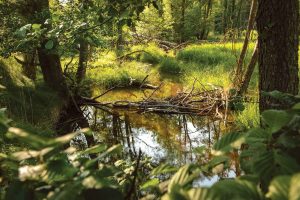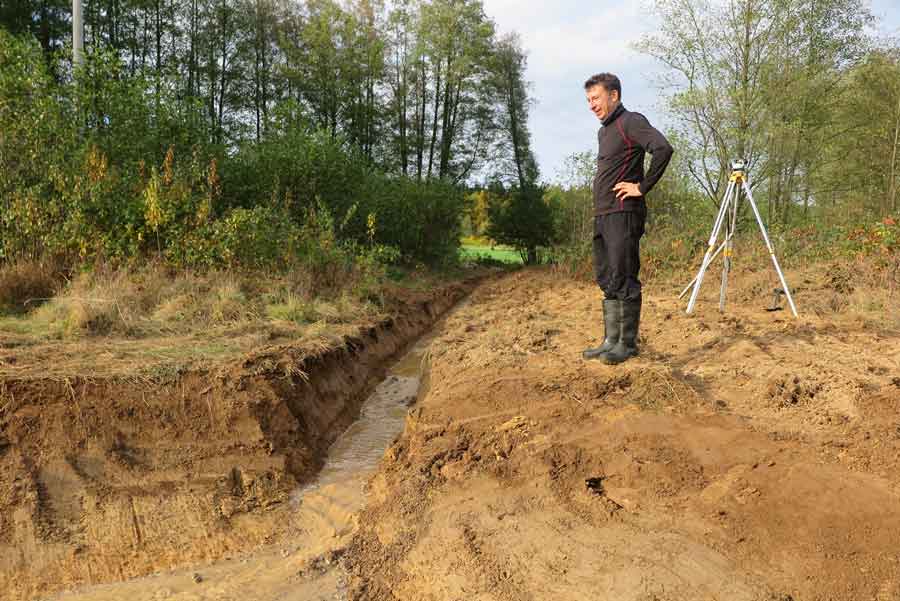
On this page, we're happy to answer common questions about our work, biodiversity, wetlands and other important questions about the sustainability of our native landscapes. If there is something you are interested in that you haven't found here, please contact us using the contact form.

Answers to frequently asked questions.
The importance of wetlands to animal and plant communities has already been explained. Our landscape is subject to widespread water loss and consequent flash flooding during heavy rainfall. Wetlands can absorb huge amounts of water, which they then release during the dry part of the year.
Of course, if a large amount of water falls, especially during prolonged rainfall, the terrain will be flooded as it is elsewhere. Since we do not use dam construction, there is no risk of our pools bursting or other catastrophic scenarios.
We are convinced that visiting such oases of tranquility subliminally affects everyone with an influx of positive energy. Observing life in a tranquil pool is inspiring, calming, and perhaps brings the visitor to thoughts other than the stresses of everyday life.
Every freshly established pond evolves over time. It depends on local conditions, soil composition, water type. It usually takes 2-4 years to establish at least a partial equilibrium. Thus, in the first years, turbidity, algae growth, cyanobacteria are common. Usually after the first wild phase the water clears and vegetation growth stabilises.
Any such body of water is a very dynamic environment that is constantly changing. Grounding naturally occurs. Gradually, the water decreases and the vegetation increases. From time to time it is necessary to radically clean the pools with a dredger.
The European beaver provokes very controversial attitudes in people. On the one hand, it puts water back into the landscape where the soil is suffering from drought, on the other hand, it destroys coastal trees and shrubs in winter. We do not put ourselves in the role of an arbiter, but if we compare the activities of some river basin managers (see the Berounka and Klabava below Plzeň) and beavers, beavers would still have to work hard to catch up with the rate of cutting down old trees along the Berounka.
There are no beavers on our sites (except Kateřinský brook). We do not attract beavers, nor do we scare them away. If beavers become established in a city park, it's a problem. On the other hand, in the wild they have a role to play and their presence is fine. If there are problems, the official conservation authorities should be contacted.
Of course, mosquitoes breed in any body of water. So far, we haven't seen any complaints of overpopulation.
One fundamental rule of our work is always to be in harmony with the locals. We have never banned (on the contrary) access to our pools and wetlands, and we strive for a positive attitude and harmony with visitors and farmers and foresters working in the area.
The site will never work without the understanding and consent of the local people.
Yes, please. Don't litter and clean up after unruly visitors – thank you.
We are currently working on projects, some of which you can also support.
| Cookie | length | Description |
|---|---|---|
| cookielawinfo-checbox-analytics | 11 months | This cookie is set by GDPR Cookie Consent plugin. The cookie is used to store the user consent for the cookies in the category "Analytics". |
| cookielawinfo-checbox-functional | 11 months | The cookie is set by GDPR cookie consent to record the user consent for the cookies in the category "Functional". |
| cookielawinfo-checbox-others | 11 months | This cookie is set by GDPR Cookie Consent plugin. The cookie is used to store the user consent for the cookies in the category "Other. |
| cookielawinfo-checkbox-necessary | 11 months | This cookie is set by GDPR Cookie Consent plugin. The cookies are used to store the user consent for the cookies in the category "Necessary". |
| cookielawinfo-checkbox-performance | 11 months | This cookie is set by GDPR Cookie Consent plugin. The cookie is used to store the user consent for the cookies in the category "Performance". |
| viewed_cookie_policy | 11 months | The cookie is set by the GDPR Cookie Consent plugin and is used to store whether or not user has consented to the use of cookies. It does not store any personal data. |